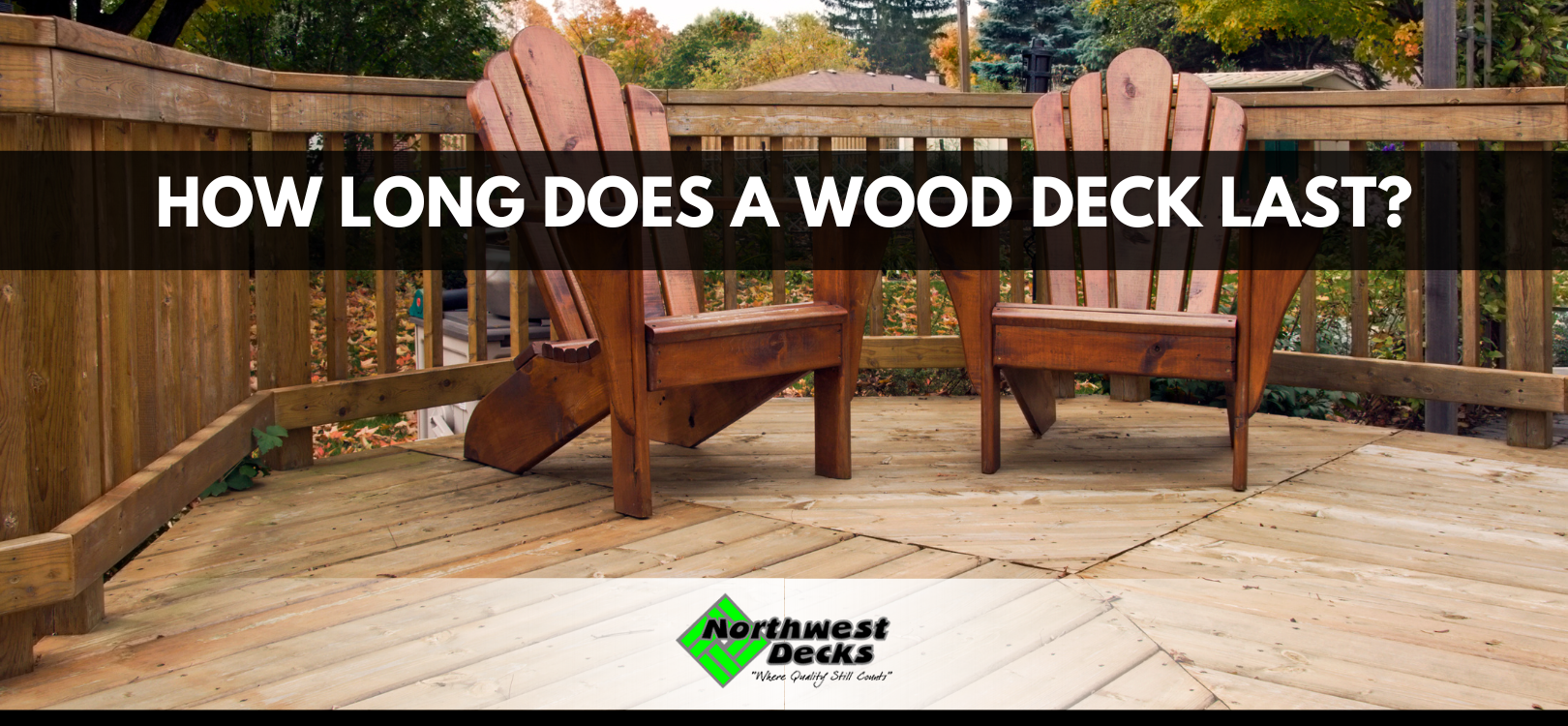How Long Does a Wood Deck Last?
Starting the journey of deck construction raises an important question: How long does a wood deck last in general? It’s a critical consideration for homeowners looking to invest in a long-lasting outdoor space. From the enduring charm of redwood to the timeless appeal of hardwoods, each material has its own lifespan and maintenance requirements. In this insightful exploration, we discover the secrets behind the longevity of different wooden decks.
The Lifespan of Different Types of Wooden Decks
The lifespan of a wood deck is dependent on the type of wood the decking is made from. In the table below, you can explore the lifespans and maintenance essentials of popular decking materials – from redwood and cedar to hardwoods like ipe, mahogany, and pressure-treated pine. If you’re considering using wood, make an informed decision for a durable outdoor space that stands the test of time.
| Types of Wood Decking | Average Lifespan |
| Cedar Wood Decking | 20 – 30 Years |
| Redwood Decking | Around 30 Years |
| Ipe Wood Decking | Up to 75 years |
| Mahogany Decking | More Than 40 Years |
| Pressure Treated Wood Decking | 15-20 Years |
| Hardwood Decking | Over 75 Years |
Cedar Wood Deck
Cedar wood deck attracts with its natural beauty and resilience, with a potential lifespan of 20-30 years when properly maintained. The main factors for longevity are regular cleaning, gentle washing, and strategic sealing. These simple techniques protect the deck from the weather, preventing degradation and retaining its appealing look. Cedar is a practical and long-lasting solution for individuals looking for a blend of elegance and durability in their outdoor space.
Redwood Deck
Redwood decks, which are popular wood decking in the USA, are known for their durability, straight grain, and natural resistance to wood-boring insects and weathering. Typically lasting around 30 years, the key lies in consistent refinishing and sealing to combat color changes, especially in sun-exposed areas. Redwood, like Cedar, needs regular maintenance to ensure its life.
However, a notable consideration arises in the shift from old growth to younger secondary growth redwood in the market. It’s important to remember that today’s popular younger secondary-growth redwood, while still somewhat durable, lacks the rot resistance of the older growth material. Thus, understanding the unique characteristics of redwood and committing to frequent maintenance guarantees that your deck will survive over an extended period, both in terms of looks and durability.
Ipe Wood Deck
Ipe wood decks are known for their great resilience due to the wood’s natural hardness and resistance to insects and degeneration. Ipe decks can last up to 75 years with proper care, making them a long-term investment for homeowners. Regular sweeping to prevent debris buildup, paying close attention to mold prevention in rainy regions, and the occasional application of a strong sealer to maintain the deck’s natural color are all simple ways to extend the life of an Ipe deck. Choosing Ipe wood for your deck provides not only aesthetic appeal but also a functional and long-lasting outdoor environment that can survive through the tests of time.
Mahogany Deck
Mahogany deck is popular among homeowners because of its everlasting resilience and timeless beauty. Mahogany wood’s rich, dark color and tight grain make a visually stunning and long-lasting outdoor area. A Mahogany deck can survive for more than 40 years if properly maintained. Cleaning with a soft bristle brush and a mild wood-friendly cleanser is required on a regular basis to prevent the buildup of debris and mold growth. To avoid potential damage, it is critical to avoid high-pressure power washing. Periodic sealing using a high-quality hardwood sealant preserves the color and protects the wood from the elements. Homeowners can enjoy the elegance and longevity that Mahogany decking gives to their outside areas by following some simple recommendations.
Pressure Treated Wood Deck
Pressure Treated Pine deck is practical and long-lasting, but care is essential. Softwoods are prone to rot and mold, demanding yearly water sealing. This keeps water from penetrating the wood grain and speeds up the degeneration. Regular maintenance, such as sanding and pressure washing, can help to extend the life of the deck. With careful care, a 10-year-old deck can last another decade or more. The usual lifespan is 15-20 years, depending on maintenance, water exposure, and sunlight exposure. Understanding the commitment to maintaining it is important for busy homeowners since negligence could shorten the deck’s lifespan. Understanding these simple suggestions assures that your Pressure Treated Wood Deck will last for a long time.
Hardwood Deck
Finding hardwood species that can survive exposure to the outdoors is a game changer for outdoor settings. South American hardwoods that are recommended include teak, cumaru, tigerwood, garapa, and massaranduba, which have been proven to survive over 75 years with minimum maintenance. These woods provide a variety of natural benefits, including resistance to rot, decay, mold, and insects, as well as safety with a class A flame spread rating and natural slip resistance. These hardwoods are ideal for decks, fences, and more, and require just basic maintenance, occasional power washing, and optional annual oiling for color protection. Unlike softwoods, the method is simple, requiring no sealers or complex processing. Investing in hardwood decking means investing in long-lasting quality that will allow you to enjoy your outdoor setup for years more.
Factors That Affect the Life Span of Your Decking
Understanding the elements that influence the longevity of your wood deck is crucial for making it stand the test of time. Here’s a breakdown of the key factors:
- Maintenance Matters: Regular maintenance is the foundation for a long-lasting wood deck. Simple practices like sweeping away debris, addressing mold, and applying protective sealants not only keep the deck looking good but also significantly extend its lifespan.
- Climate and Weather Challenges: Decks in regions with extreme weather conditions, whether facing heavy snowfall or relentless sunlight, may experience a faster decline. On the other hand, decks in more temperate zones tend to survive with greater resilience.
- Quality of Materials: The quality of materials used directly influences durability. Opting for high-quality wood and materials enhances the deck’s ability to withstand the tests of time.
- Construction Quality: The construction quality, including the skill of the builder, has a substantial impact on the deck’s lifespan. A well-built deck is more likely to stand strong for an extended period.
- Impact of Use and Foot Traffic: The more a deck is used, the quicker signs of wear and tear may appear. Heavy foot traffic can impact the deck’s longevity.
Contact Us for Outdoor Decking in Tacoma
Ready to enhance your home with a beautifully crafted deck or patio? At Northwest Decks in Tacoma, we specialize in creating outdoor spaces that stand the test of time. Whether you’re leaning toward the durability of cedar decking or the timeless charm of hardwood, our expert team is here to guide you from design to execution. Elevate your living space – contact Northwest Decks, your premier deck builder in Tacoma. Contact us to schedule your appointment now to turn your outdoor dreams into a reality or call us at 253.342.4688.

